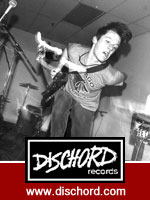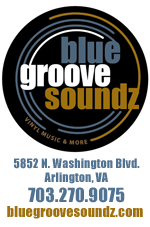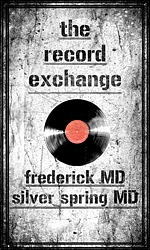
PHOTOS: ERICA BRUCE | The long careered rock star often has a constant battle with his past. Fans want to hear the old hits; artists want to present their latest work. Generally, it’s a trade-off. No such compromise is coming in the current tour by Bruce Springsteen and the E Street Band that stopped at the Verizon Center in Washington, D.C. Friday.
While in some past tours, he’s presented whole albums within his typically long show, this year he’s presenting the entirety of 1980’s double album The River at every stop, in order. This is a kind of slavishness to the original that even the first River tour never had. And it takes up a full two hours in a three and a half hour show.

In a way he is supporting his latest release—which is a $100 boxed set of a remastered River with outtakes. One of those outtakes, the perfectly fine “Meet Me in the City,” he is using to open each show, with the full house lights up, as if to remove the illusion of spotlit stars on stage. It was another reminder that this was an Everyman presenting his youthful songs of searching and creeping adulthood to fans he treated like peers.
Still, playing 20 songs in exactly the same order is an anomaly in a Springsteen show—he likes to throw in curveballs and surprises in every one of his stops, to make it interesting for himself if not for the fans who may come to multiple shows. For that, he only had a handful of songs at the end to switch up at will before the encore.
The presentation of The River came with a kind of introduction, talking about how he wanted to create an album not from an outsider’s point of view, as he said his earlier albums had been, but as someone who was trying to find his way into a community.
He said it was also programmed like an E Street show, with all the celebration, contemplation, and possible transcendence that could occur (though looking at the original album, it seemed like it was programmed with uptempo songs leading to slower ones to end each side).
Some songs came with their own spoken introductions, as if to apologize unnecessarily for their being so naive. He could see now the point of view of his father with whom he was at odds in “Independence Day”; he nearly dismissed “I Wanna Marry You” as “a daydream” about love. “It’s not the real thing,” he said, “but I had to start someplace.” And to it he added an elaborate musical introduction with Steven Van Zandt.


It was interesting to consider how well this set of songs held up over 35 years. Many of them sounded great to be sure, from “Jackson Cage” and “Out in the Street” to the central punch of the title song—and the pathways to Nebraska seen in solitary songs like “Stolen Car” and “Wreck on the Highway,” which is as well put together as a Hank Williams classic.
But some of these throwaways, like “Crush On You” or “Fade Away” (which essentially is an elaborate play on the recording technique) must not have been indistinguishable from the perfectly fine things he eliminated from the set, (such as “Meet Me in the City” in the opening).
Perhaps starting to rethink the whole concept just four shows into the tour, he seems to be speeding up many of the uptempo songs and not allowing the kind of immersion that slower tracks require. The start of “Independence Day” had it; but it ended almost perfunctorily. “Drive All Night” has the kind of mesmerizing repetition that would have been better served in a longer version.
Of course some of these songs had already changed from years of touring. None so more than “Out in the Street” which became a crazy centerpiece during the long Born in the U.S.A. tour and still retains its odd “Uh-Oh” call and response from the audience, and individual choruses from the band members at the end.



“Two Hearts,” for its part, still ends with Springsteen’s coda with Van Zandt tacked on, lifted from the old single “It Takes Two” from Marvin Gaye and Kim Weston.
The big hit from The River, “Hungry Heart” got a big workout that included the first of Springsteen’s scampering into the audience on a carefully prescribed catwalk between the front pit and general admission standing, where fans were delighted, shot pictures, and held him as he crowd surfed back to the stage (though there didn’t seem much of a wave propelling him).
He’s still quite a figure on stage—at 66 his voice is strong, his guitar playing still top-notch, though you don’t often hear it (he’s got two other lead guitarists on stage not to mention two more strumming). And if he doesn’t do the kind of acrobatics he once did (up until recent tours, he made a big show of jumping onto the piano or sliding on his knees) he was doing the kinds of things that his fans of the same age would never do (many standing up in general admission could make it though just standing).
As he does this visitation to the fans, though, saxophonist Jake Clemons has by now confidently taken up all of his uncle’s memorable sax parts while still making them something of his own.



Just before the final song on “The River” Springsteen summarizes his intent so long ago, saying it was an album about realizing that maturity was at hand, and the clock was ticking away into adulthood. And at the end of the final “Wreck on the Highway” he says merely, “That’s The River” and even takes a bow.
Presented as one piece, it makes one think. Mostly: Would it have worked better as a single album and had more impact? Maybe. For all the 20 songs on the two original LPs, though, I was demolished by the two he played soon after from Darkness on the Edge of Town. “Prove It All Night” followed by “Promised Land” gave me all the emotional punch to make them the highlight of the night. And it took just two songs, not two albums worth. But that just might be because of personal taste or how it reflected my own life at the time.
There wasn’t a lot of time to play much else, aside from certain obligations—“Thunder Road” followed by “Born to Run” (there might have been an encore in between but the band didn’t even leave the stage to allow for one). That means short-changing some of the great songs he’s written in recent years.
Certainly “American Skin” has taken on a new power because of events of last year. But instead it was one of his most relaxed songs of this century, “Wrecking Ball” and just the title song of “The Rising.” He dug furthest back at the end of the show, for a lights up “Rosalita” that rocked the house without the usual acrobatics and a terrific version of “Shout” to cap it in which the crowd responded as one.
Here you realized what a great thing this E Street band and its leader are, what they can accomplish, and how they should be unshackled from having to play a score of songs from a single album just to coincide with reissue marketing.
The setlist for Bruce Springsteen Friday was:
“Meet Me in the City”
“The Ties That Bind”
“Sherry Darling”
“The River”
“Jackson Cage”
“Two Hearts”
“Independence Day”
“Hungry Heart”
“Out in the Street”
“Crush on You”
“You Can Look (But You Better Not Touch”)
“I Wanna Marry You”
“The River”
“Point Blank”
“Cadillac Ranch”
“I’m a Rocker”
“Fade Away”
“Stolen Car”
“Ramrod”
“The Price You Pay”
“Drive All Night”
“Wreck on the Highway”
“Darlington County”
“Prove It All Night”
“The Promised Land”
“Tougher Than the Rest”
“Wrecking Ball”
“The Rising”
“Thunder Road”
“No Surrender”
“Born to Run”
“Dancing in the Dark”
“Rosalita (Come Out Tonight)”
“Shout”













